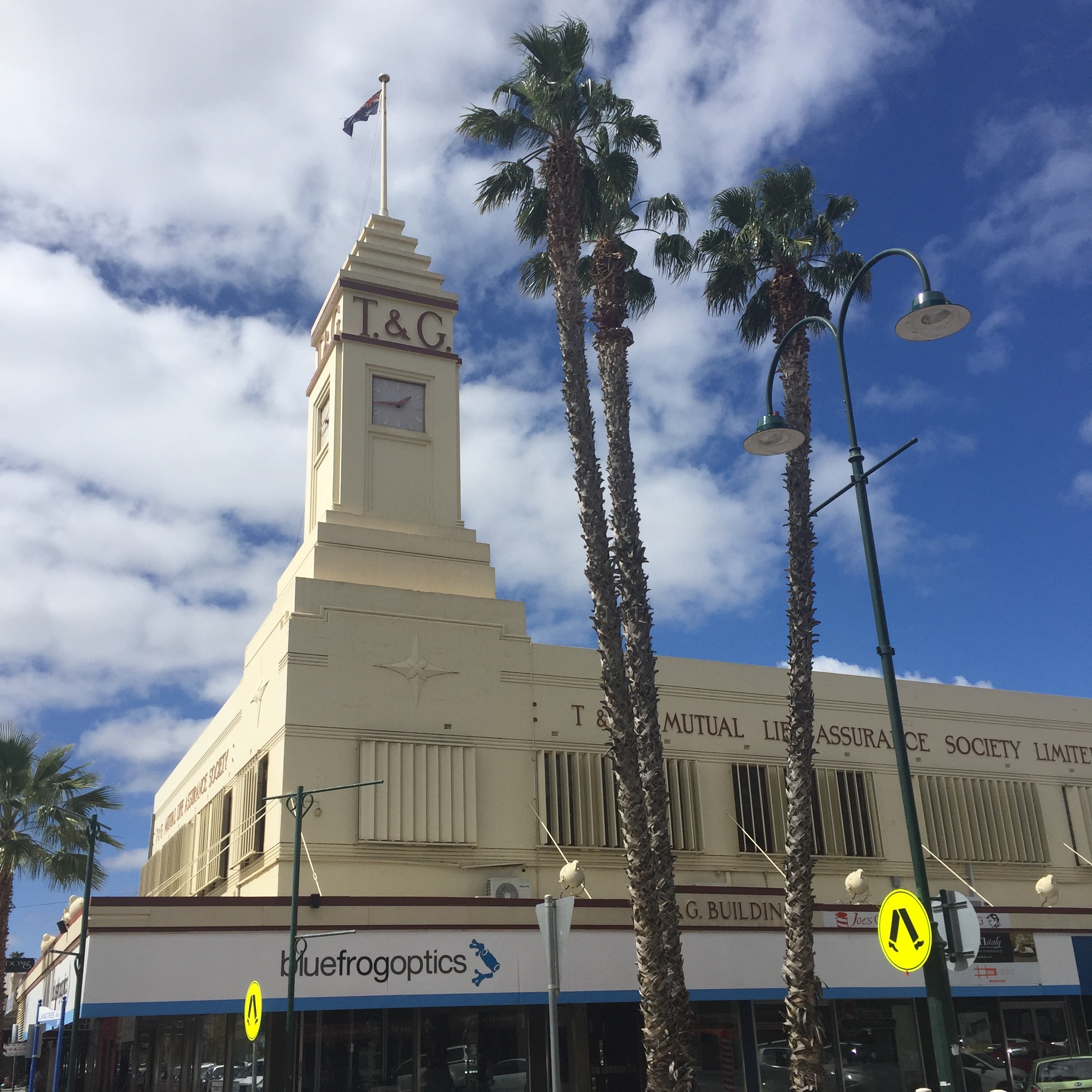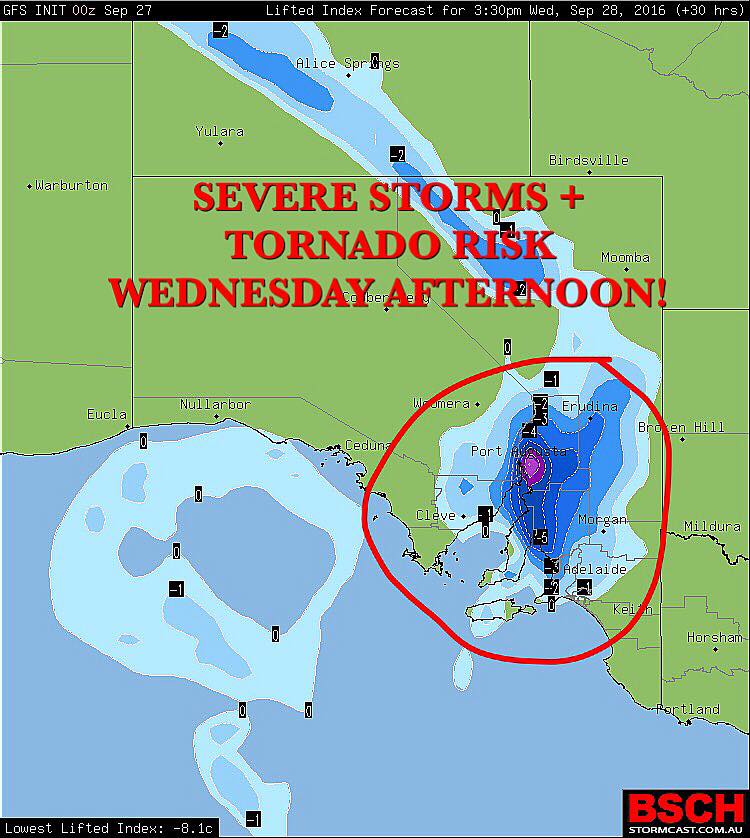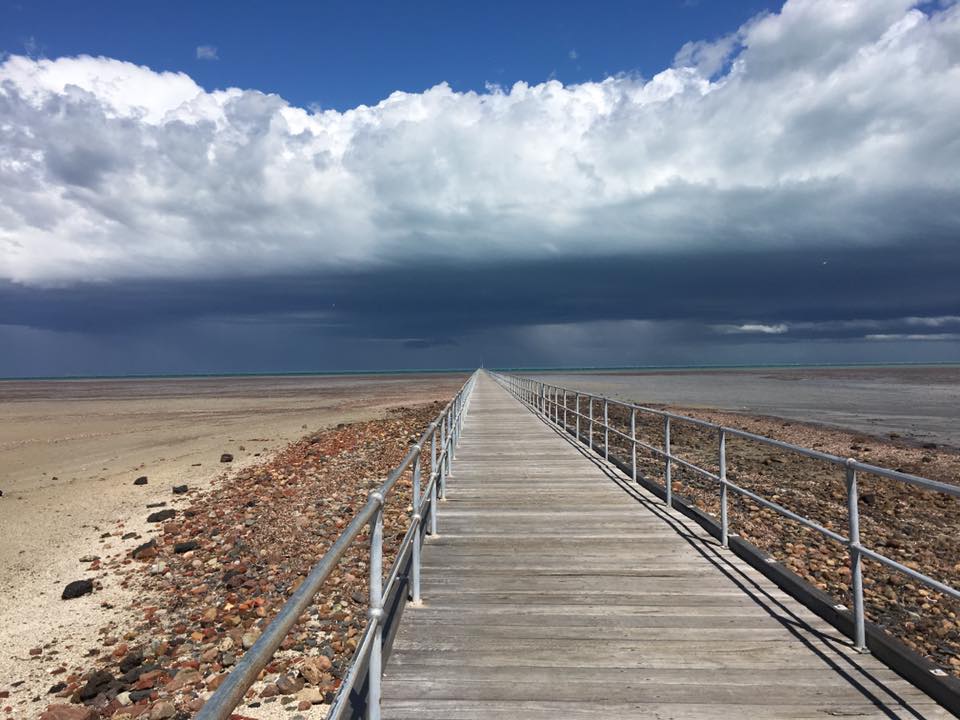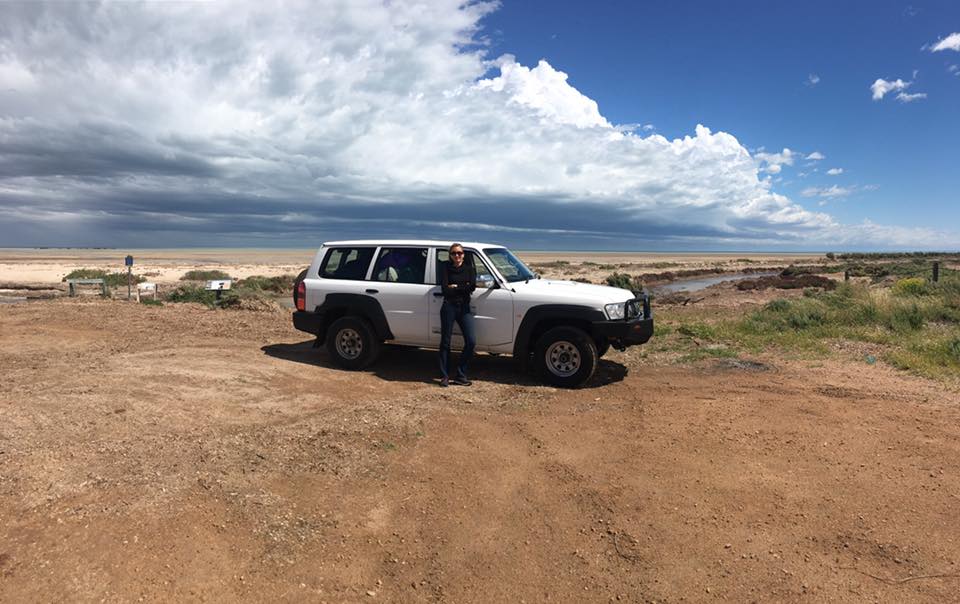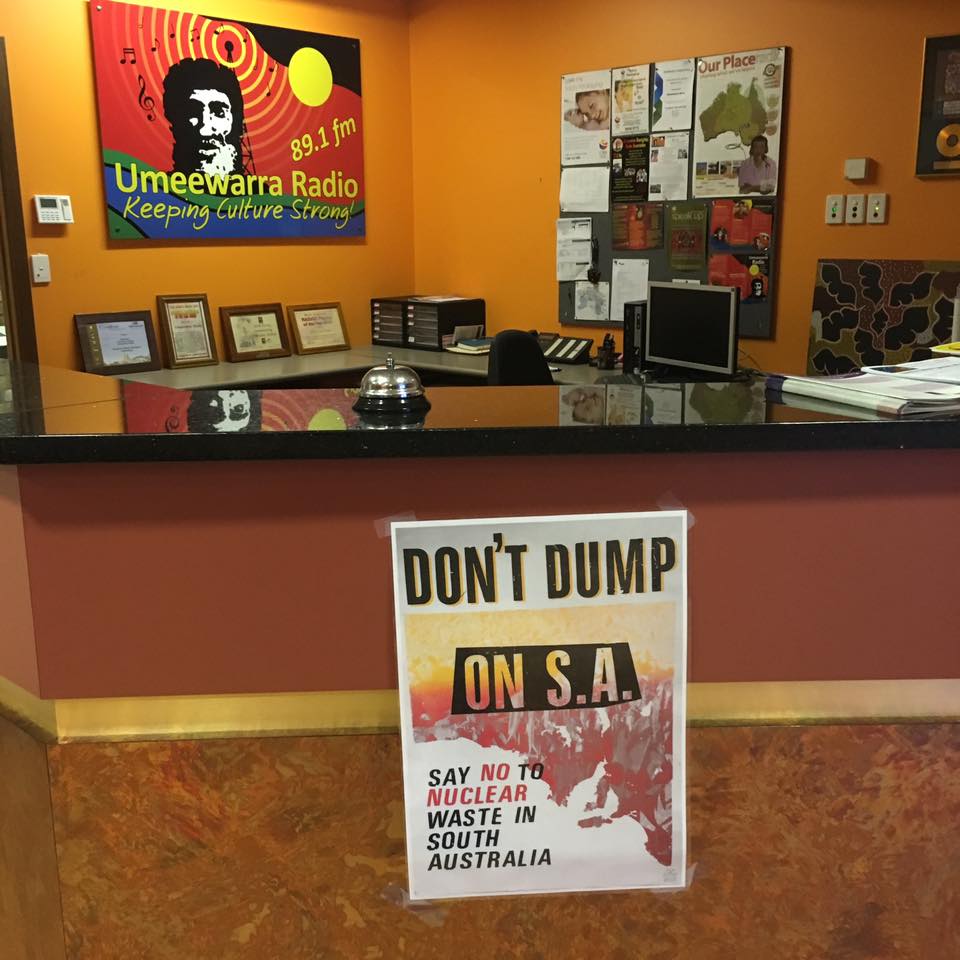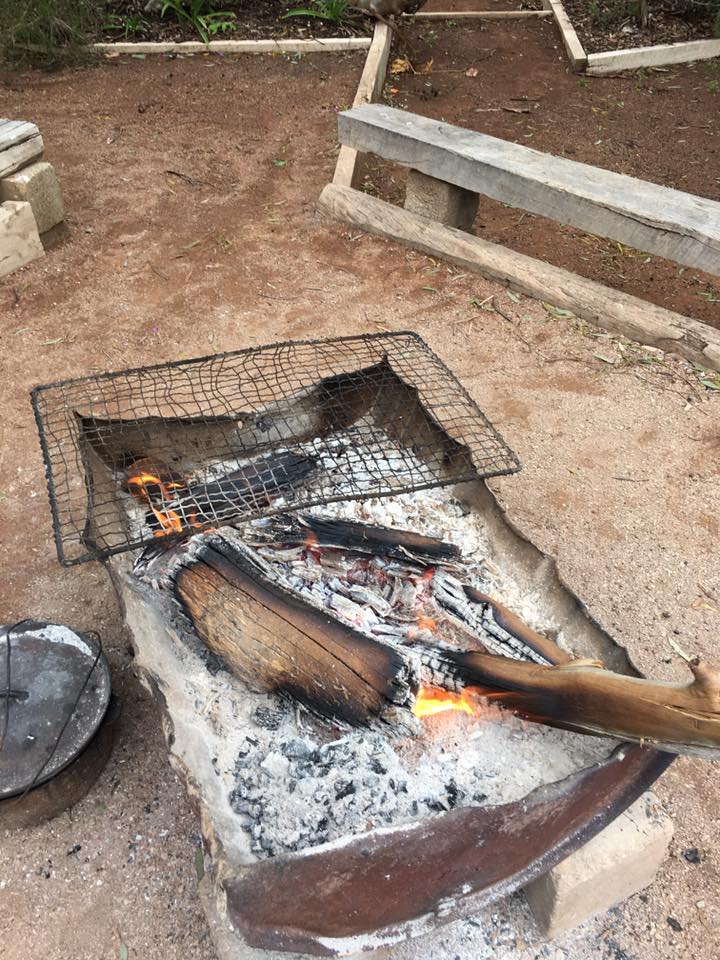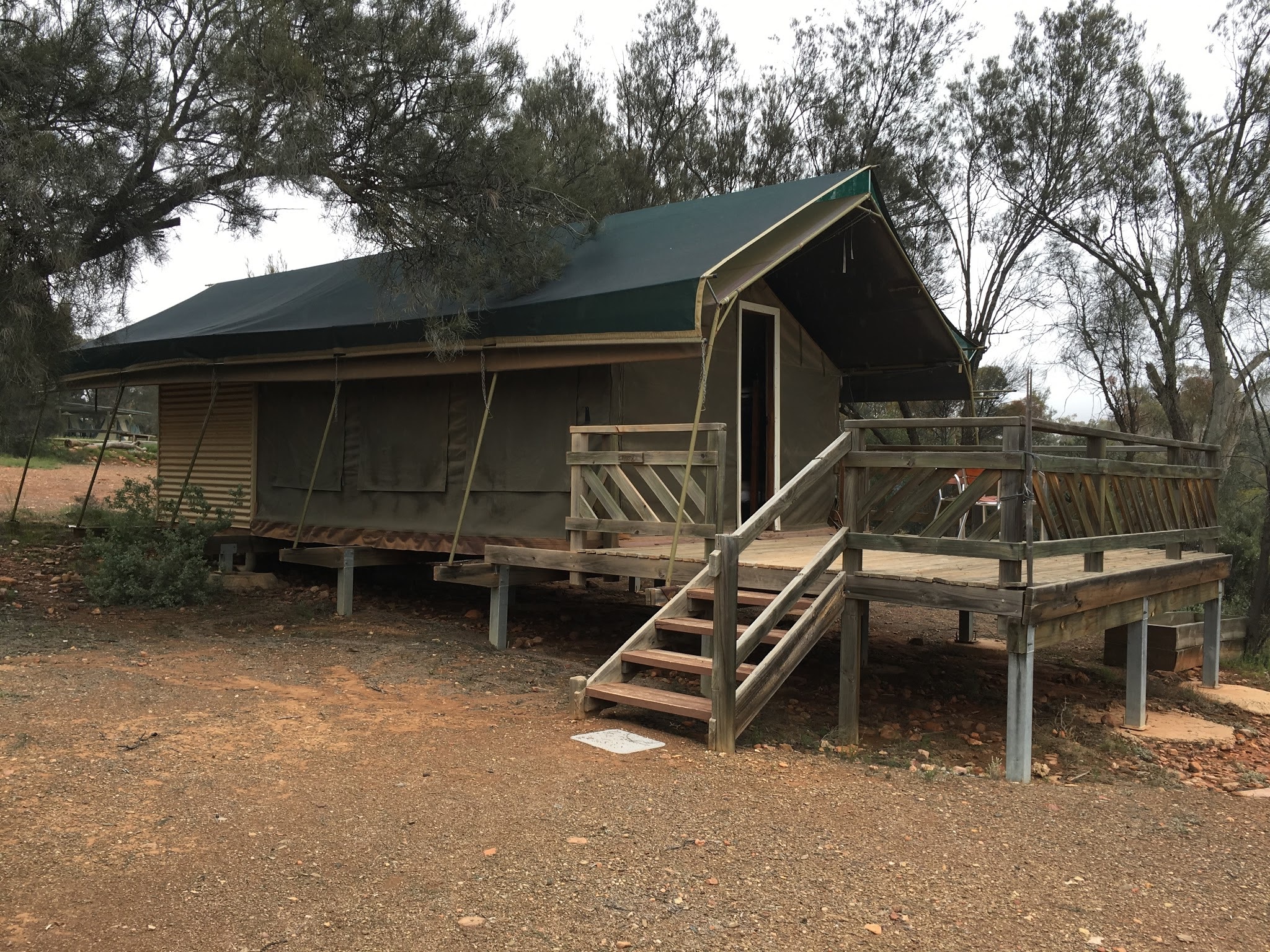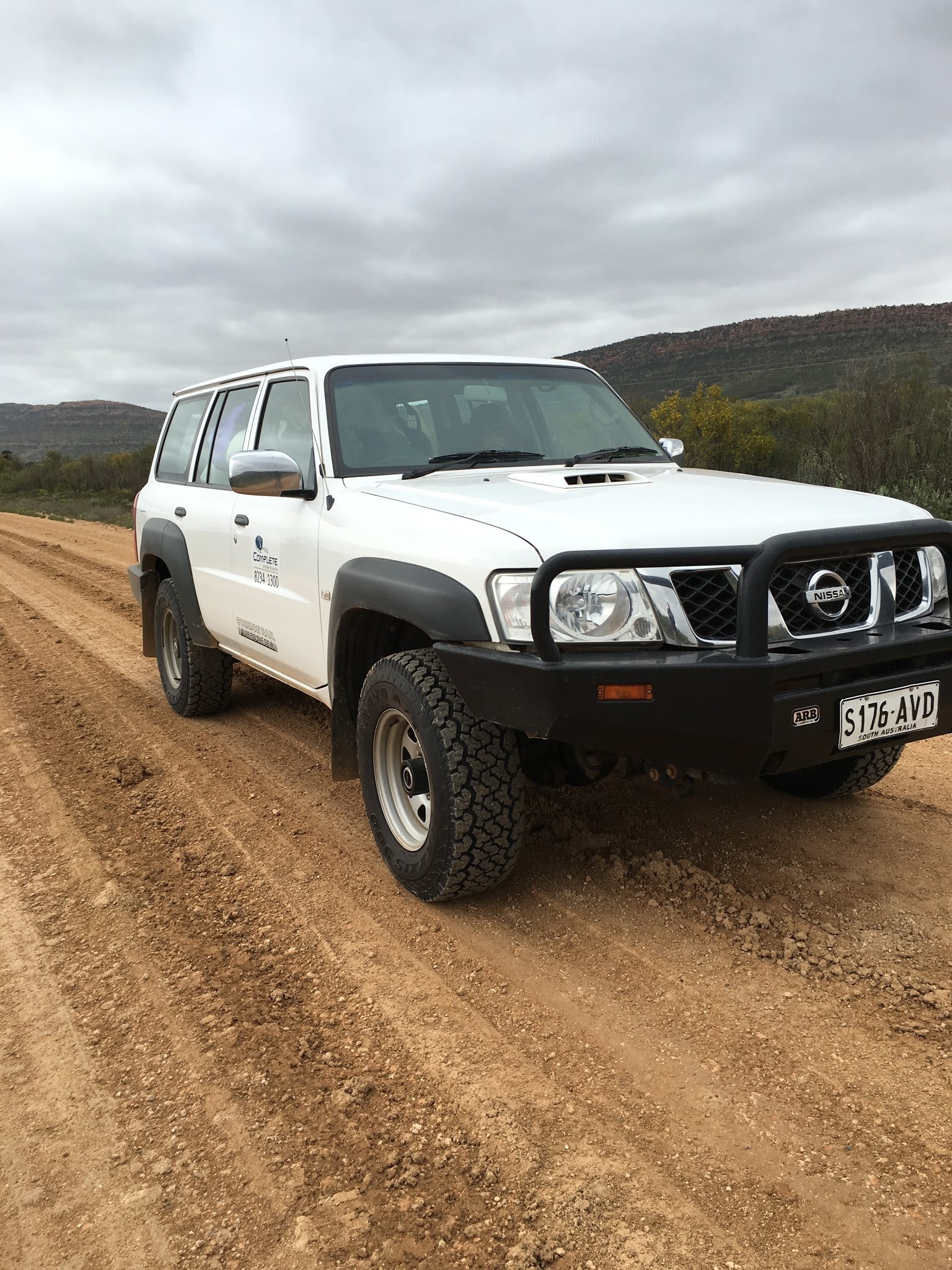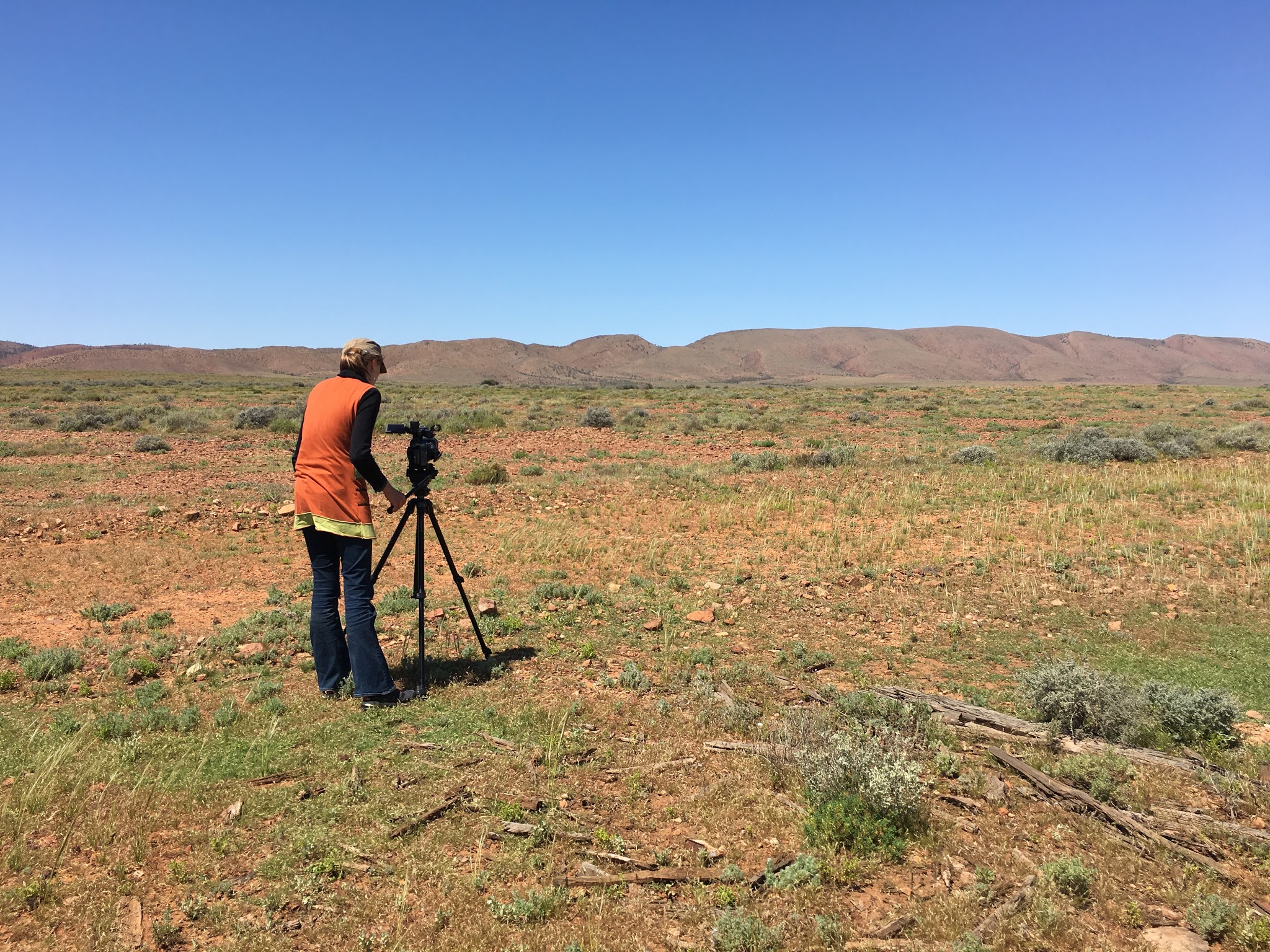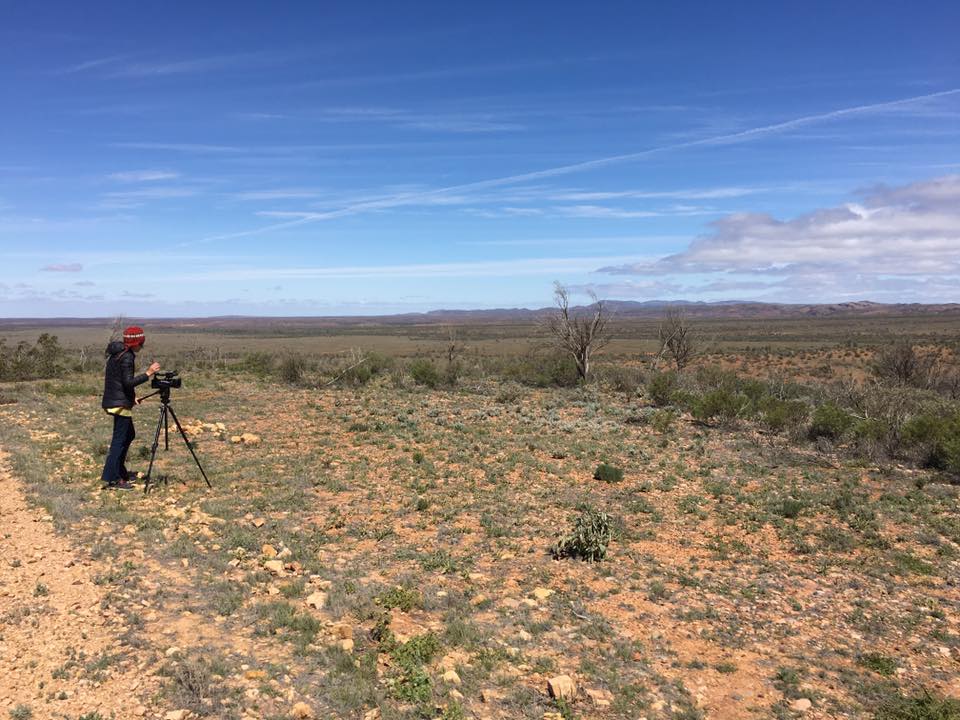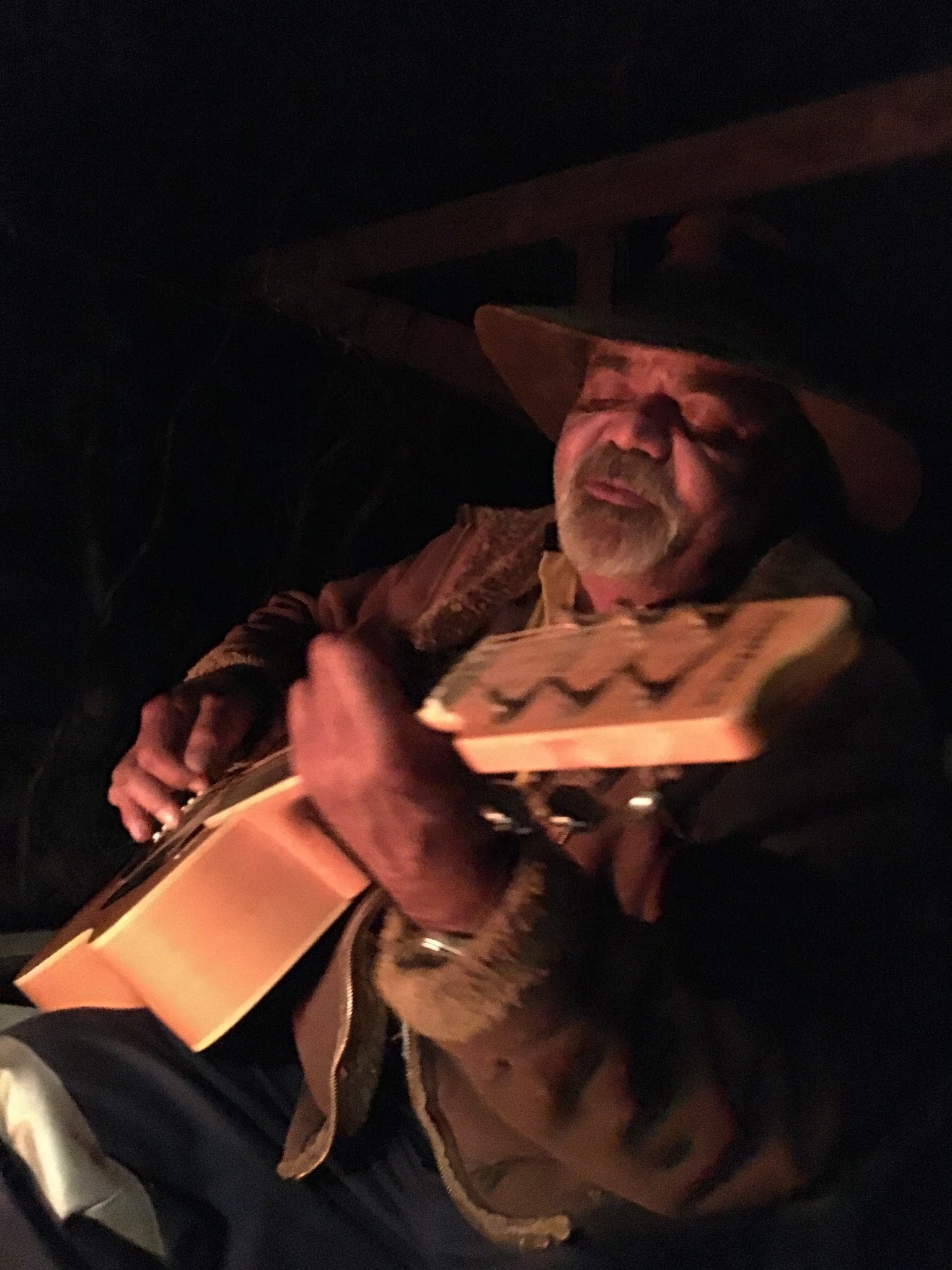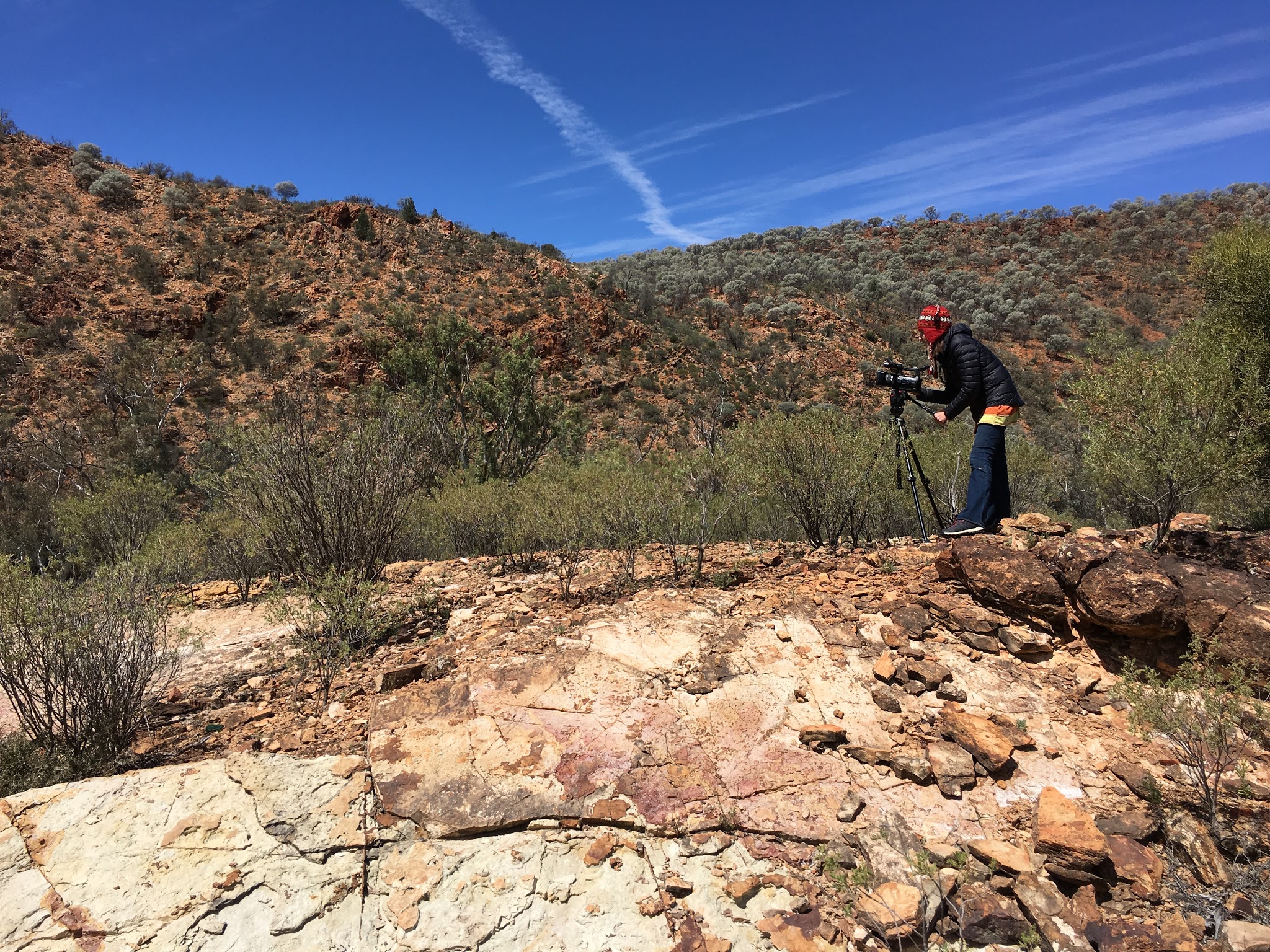For film excerpts relating to this blog, and news about our upcoming film, Protecting Country, please go here or scroll down to the bottom of this page.
Over two years ago, my partner Alexander Hayes met Bruce Hammond, of the Tanganekald & Western Arrente people, South Australia, who brought to his awareness the ongoing struggles and challenges that his people and other Aboriginal communities face, particularly in light of the South Australian proposal for a nuclear waste dump in the Flinders Ranges. With over three months of logistics and planning, and at Bruce's invitation, Alex and myself will be travelling through many different communities in South Australia, listening to the voices of people on country, who have not been consulted by the government in an appropriate manner.
So on September 24th we started our journey from Canberra to South Australia.
Our road trip took us through Wagga-Wagga, the Hay Plains, Benanee Lake, Balranald, Mildura, finally arriving in Adelaide on the morning of the 26th.
On 26 September, 2016 we had the pleasure of meeting and interviewing Karina Lester, Co-Manager and Aboriginal Language Worker at Mobile-Language Team, at the University of Adelaide. Karina is the daughter of well-known Yankunytjatjara Elder and Activist Yami Lester, who was blinded by the 'black mist' from the first Atomic Test Bomb at Emu Junction, South Australia.
Karina told us that the idea of a nuclear waste dump in South Australia is not new - her grand-mother and her family successfully fought against it back in the 1990s. But now it is on the agenda again, and Aboriginal communities whose land the nuclear dump would be built on are not being properly consulted. Even though the South Australian government is sending representatives to a hundred different communities, under the guise of consultation (Get to Know Nuclear), they are not engaging language experts and interpreters to communicate directly and effectively with these communities. Aboriginal people are therefore not getting all the information on the nuclear waste project, thereby contravening the United Nations Declaration on the Rights of Indigenous Peoples on Free, Prior and Informed Consent.
Well, September 27th turned out to be a full day! We had the great privilege to interview Tauto Sansbury, Steven Harrison, and Bruce Hammond about their perspectives on the nuclear waste dump.
Tauto Sansbury asked, with good reason, why it is that no other country seems to be putting their hand up for the 'privilege' of getting a nuclear waste dump, if it is that great an opportunity!
Senior Corporate Officer Ruth Miller at the Tandanya National Aboriginal Cultural Institute then welcomed us with open arms to show us through the amazing 'Nuclear' exhibition retracing the stories of the people affected by the 1950s British nuclear tests in South Australia, through videos, archival footage, paintings, and creative objects. There, we interviewed artist Steven Harrison about his perspectives on the nuclear waste dump and how his art practice has been underpinned by a need to tell the stories of the country affected by the British Nuclear Tests. We also sat in the eye-opening '10 minutes to Midnight' 360-degree art installation.
In the afternoon, Bruce Hammond talked to us about the ongoing cultural genocide of Aboriginal people: in his opinion, the nuclear waste dump is simply a new act of dispossession in a long series of genocidal acts perpetrated against Aboriginal people since colonisation - taking away land, language, culture, separating families, dividing communities, and now ignoring cultural protocols and custodianship of country, putting money first, appropriate consultation last - politicians come and go, he said, but Aboriginal people are still here, fighting on...
With Bruce, we planned our trip ahead - with invitation, we look forward to connecting with Elders and community as we travel from Adelaide, through Port Augusta, Quorn, Hawker, Leigh Creek, onto Nepabunna tomorrow. Weather permitting we will 4WD (Nissan Patrol) across to Marree onto Cungmurka, William Creek and up to Oodnadatta - two days filming and back via the Kempe Road, through to Coober Pedy, Coondambo, Woomera, Port Augusta then back to Adelaide...
I am now sorting the interviews and putting together footage as we go... But I need to get ready for the big drive tomorrow! So long...
Ok... Long time no see! So many stories to tell... The reason for the long silence on this blog was the fact that we ran into the 1-in-50-years storm in South Australia, which made news headlines for days as it caused extensive damage, flooding, electricity blackouts and road closures around the Eyre Peninsula... Right where we happened to be!
On September 28th we started our drive from Adelaide to Port Augusta, knowing from the news, and just by looking at the ominous skies, that the storm was looming. Trusting what our guide, Bruce Hammond, had said, we made it safely to Port Augusta - through heavy rain, then rays of sun shine, black skies over turquoise waters in Port Germein, and even stopping for a quick look at Nessie half-way...
In Port Augusta we drove straight to Umeewarra Media, where Adnyamathanha Elder Vince Coulthard was expecting us. Vince is the Chairperson of the Adnyamathanha Traditional Land Association, and the Director of Umeewarra Media Aboriginal Association. In his interview, Vince explained to us the significance of the Adnyamathanha Flag, and his strong opposition to the nuclear waste dump being located on Aboriginal people's land - why should Aboriginal people be expected to give over their land, yet again, he asked, when they have already given so much, particularly in South Australia, with the original nuclear tests, and the mining industry? Next we met Stephen Atkinson, from Port Augusta, who commented that both the Federal and State nuclear waste dumps proposals could well be hiding something else - a push for nuclear power for South Australia maybe? We finished our two interviews just in time before losing all electrical power due to the storm, and retreated to our small hotel, with no electricity, to ride out the storm... Knowing that in the morning, we were going to meet Vince to drive out to Yappala Community, where the McKenzie sisters are fighting the Federal proposal of a low-level nuclear dump on their traditional lands...
After a very, very windy and stormy night, and still with no electricity, we drove out of Port Augusta, through Hawker, to Yappala Community, early on the morning on September 29th. The Federal Resources Minister, Matt Canavan, was expected to meet with the community but his flight had been cancelled due to the storm... Fierce winds and extremely cold weather greeted us as we got out of the car - soon tempered by the arrival of three brilliant, dynamic, and outspoken sisters: Regina, Vivienne, and Heather McKenzie. Alwyn McKenzie, Michael Anderson (ATLA), and other government representatives were also present. We quickly got a run-down of the situation by Regina McKenzie, before being ushered into a cold, dark room (no electricity there either), where the meeting was going to take place - the minister, instead of being there in person, was about to link in by phone. Vince and the McKenzie sisters proposed that I should film the meeting, and there was a consensus that I should be allowed to film, even from the minister and his staff, which I did, of course, for more than an hour. The attitude of the minister and the government, and their lack of consultation, again, revealing a very poor understanding of the importance of country for Aboriginal people. Regina explained how they had been able to secure a $50,000 grant from the State Government of South Australia to map several songlines on their traditional lands, working together with landowners on this important project, only to learn through a news bulletin that this same country had been earmarked for a low-level nuclear waste dump, with no prior consultation, and no mention of it by the landowners concerned... This footage of the meeting is riveting!
I then interviewed Regina McKenzie, who reminisced how her father walked with her on country, many many times, telling her the stories and songlines for their traditional lands... Exactly where the nuclear waste dump is being proposed, without consultation. Alwyn McKenzie, on the other hand, talked about the fact that although he did not trust the international intermediate and high-level nuclear waste proposals by the State, the low-level nuclear dump may be an acceptable thing, on the condition of it providing economic benefits to his community and people. Having had a close family member undergoing extensive cancer treatments for a number of years, he said he understood the necessity and the need for such medical treatments, and that the waste they produce should be safely stored somewhere - as long as Aboriginal people were consulted about it and told all the facts. All present at the meeting agreed that the lack of consultation by the Federal Government was the sticking point, and had to be remedied straight away.
After refuelling in Hawker in one of the only places with a generator, we headed out to Nepabunna Community, a former mission, where both Bruce and Vince had told us to go to. Keeping slightly ahead of the storm, we travelled for about 60 kilometres on a dirt road, stopping to film kangaroos, emus, and brumbies, heading towards Nepabunna with no idea of where we were going to spend the night or who we would meet there - only guided, again, by what we had been told. Arriving in Nepabunna as the storm was about to set in, we were advised by Mick Coulthard to retrace our steps back two kilometres to Iga Warta Community. There, on night fall, we were greeted warmly by Terry Coulthard (Junior), who offered us a spot in front of a lovely warm fire inside, some cooking implements, great company - and an invitation to stay the night in one of their luxury safari tents. A bowl of soup later, and interesting conversations galore, we were feeling much more relaxed and already planning the day ahead.
And what a day September 30th was... Getting up early after another night of stormy winds, we discovered, disappointed, that light rain had set in. In the common eating area, where everybody had again congregated around the inviting campfire, we met Terrence Coulthard (Senior), who runs Iga Warta and told us interesting stories as to why people are attracted to the Flinders Ranges - one of the oldest places on earth. Some people, he said, know something is going wrong with the world at the moment. To get answers, they instinctively end up going back to the origins of it all... Even French people like me go back to country to find answers.
As nice as it was sitting around the campfire, reality set in. Iga Warta had no electricity, and with only one generator going, it was an absolute necessity to get some firewood to keep everyone going - many stranded travellers had taken refuge at the community at the height of the storm. Taking a couple of guests with us, including Mia Knight, from Western Australia, we followed Elder Sharpie Coulthard to the hills to collect some firewood. With the rain and clouds, my hopes of getting shots of country had been dashed. But the fierce, cold winds set in again, and the sun miraculously came back almost at the same time as we returned to Iga Warta. Having collected enough firewood for the day, Sharpie told us he would come with us to Arkaroola to tell us the Adnyamathanha story of uranium. We stopped many, many times along the way to shoot some footage of the rich, amazing landscapes of the Flinders Ranges: hills, plains, creeks, rocky outcrops...
Sharpie took us to a beautiful place on country: sitting in front of the most amazing cliff face, he told us the Adnyamathanha creation story of the snake who drank too much sea water, went back to his country and became sick, vomiting in many places... This is where uranium is found - and Aboriginal people always knew to leave it in the ground, where it belongs. But the uranium used in the Hiroshima Nuclear Bomb had come from Arkaroola... Sharpie explained that Adnyamathanha people are just sad now, because no matter how much they have tried to explain things and educate white people, they are still being dispossessed, not consulted, and not listened to - the nuclear waste dump being just another chapter in a long story... Walking with Mia, Sharpie then explained the significance of water for the land, and how mining takes away the water from country. This poignant interview with Sharpie will ground our film within country: this is where the story begins, and where it ends. That night, back at Iga Warta, we were told many more stories of dispossession and survival, this time through songs around the campfire... Thank you Clarrie Coulthard, and James Butler, for sharing your songs with us and allowing us to record them. Iga Warta is a magical place: if people come to listen, and learn, they will be welcomed there with open arms. We cannot thank Terrence, Sharpie, Clarrie, Christine, James and Ty enough for the wonderful time we spent there over two days and two nights. Unforgettable.
We had to get up early the next day (October 1st) as we knew we had quite a bit of driving ahead... Having been unable to continue to Oodnadatta as planned, through William Creek, because of road closures from flooding caused by the storm, we knew we had to get back to Adelaide, with the feeling, though, that the story was complete, for now. We had gone where we were meant to go, and met the people we were meant to meet. Before we left Iga Warta, we interviewed Ty Butler, who gave us a young Aboriginal person's perspective on the nuclear waste dump: he questioned the concept that it would bring economic benefits to the community, saying that he himself had many tickets, but had never been able to find work in the mining industry.
Brachina Gorge, Flinders Ranges
On the road back we travelled to the beautiful Brachina Gorge, which offered us another glimpse of the rugged beauty of the Flinders Ranges. We then drove back through Port Augusta to Adelaide, onwards to Canberra - meeting the violence of the storm for the third time on the road: a van door slamming in the wind got the better of Alex's hand, who ended up with some broken bones in Balranald, then Hay, then Wagga-Wagga hospitals to get fixed... But that's another story. We will go back to South Australia, but after 10 interviews with some amazing people, and incredible footage of country, we feel that we have enough material to produce a film which we hope will attract some international attention onto what is happening in South Australia at the moment.
The nuclear waste dumps issue should be something that all Australians should fight, shoulder to shoulder, with Aboriginal people - for all future generations. Many thanks for following our journey.
